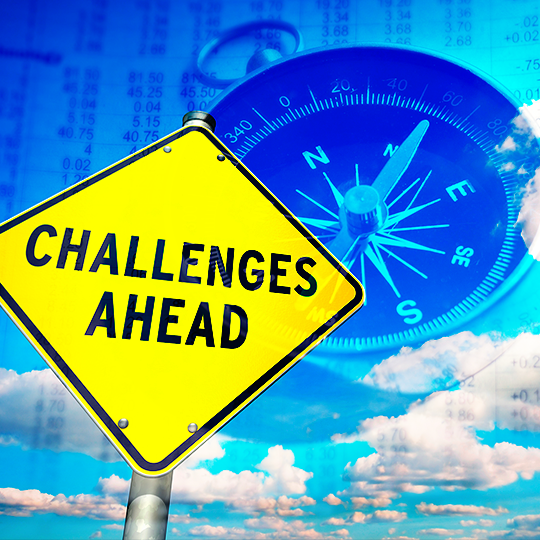Unlock generosity with these helpful strategies
By Lolly Colombo, Chief Client Officer
The New Testament story of the loaves and fishes reminds us that God’s economy is one of abundance – not scarcity. Yet, headlines over recent months tell us differently. What might this mean for fundraising trends and challenges in 2023?
The debate rages whether we are headed for a recession… or already in one. Fear and uncertainty prevail. And how people perceive the economy is more important than the actual numbers – behavioral economists assert fear can actually kill an economy. We experienced the “fear economy” like never before in 2020, and see it again today with a different slant.
The pandemic’s effects still ripple. Supply chain issues linger. Fuel and food prices are high… the value of a dollar is down. Yet even in this environment, one truth remains: in God’s economy, there is always enough.
As fundraisers for worthy and wonderful nonprofit causes
facing times and trends such as these with a biblical worldview of abundance,
how do we seek and secure the resources to move ahead?
Here are three primary fundraising trends and challenges in 2023 to watch for, plus a handful of strategies to effectively ride them out.
1. Post-Pandemic Market Correction
The pandemic released unprecedented levels of generosity – especially to human service and faith-based organizations (corrected for inflation, $488 billion in 2020 and $485 billion in charitable dollars in 2021 per the Giving USA Foundation and Indiana University’s Lilly Family School of Philanthropy.) First time and lapsed donors eagerly gave, with both groups retaining over those two years at higher rates than prior years.
In 2022, there was a notable slowdown in general giving. Pandemic-acquired donors began to attrite, while gift numbers and dollars declined. New donor acquisition in 2022 resembled pre-pandemic levels as fundraisers experienced a market correction.
2. The Economic Downturn
In June 2022, inflation surged to a high of 9.1% – the largest increase in 40 years. Stocks experienced huge downturns. Cryptocurrencies plunged alongside global financial markets. The cost of living swelled. Disposable income disappeared. We’ve seen moments of relief since then, but the storm is likely not over.
When the economy contracts, so does charitable giving. As we are approaching or are in a recessionary economy, expect acquisition to be tough – particularly in “middle America” where donor files are largely composed of small- to mid-sized, older donors on fixed incomes.
Fortune Magazine’s August 12, 2022 article titled “The economy is changing – and so is philanthropy” shared that “inflation is undercutting Americans’ finances – and their generosity. Not only are charitable donations now paying for less, but they may also soon become scarce due to recessionary fears.”
In October, the Chronicle of Philanthropy published an article titled “‘Collapse’ in Small Gifts Poses Threat for Nonprofits as Recession Looms.” The Chronicle reported that the number of donors to organizations fell by 7% in the first half of 2022 compared to the first half of 2021 – due largely to a “collapse” in the number of small-gift supporters during that time.
3. The Triple Threat
Nonprofits in the social service sector will experience a triple threat in this environment:
1) A contraction in charitable dollars.
2) The inflationary hit on the value of a dollar.
3) The increase in demand for services due to the economy.
Donor retention will be critical to keeping cash flow strong this year.
So here are some strategies you can use to unlock generosity in 2023:
- Crank up stewardship. Even in tough times, loyal donors that are thanked, called, invited, served and appreciated will continue to give. Releasing generosity is not only a transactional event but, more importantly, a transformational event – with a far stronger relational component than making a purchase. Invest in your donors.
- Effectively communicate impact. Tell your stories. Position your organization as essential to the heart-felt interests of your donors – especially those with long-term loyalty. Feature video testimonies and powerful imagery in emails and social media.
- Revise your offer strategy to chase engagement over gift size with regular donors. As competition for dollars escalates in your community, provide an irresistible offer your donors can afford. Consider setting aside Last Largest or Single Largest Gift strategies for Olympic Average strategies – engagement and higher market share should be your strategy drivers in this economy.
- Promote GIK opportunities as well as volunteerism. If charitable dollars are not flowing, make engagement a priority – create opportunities for in-kind contributions of goods, time and talent. And spend marketing dollars to promote your enterprises.
- Focus on your major donors. Let your high-value donors know how essential they are – call them, thank them, take them on tours, meet them for coffee. Invite them to make gifts from their DAF’s. The high end of your file, with their generous giving, will carry your organization through these challenging times.
Now is the time to not just say we believe in God’s abundance, but live it out daily. During this uncertain future, submitting it to prayer is crucial.
As we roll into 2023, we must actively cultivate valuable relationships with donors who care. Lean into your values and your brand promise, and stay close to your people. And hang on tight… we’ll get through this together!





